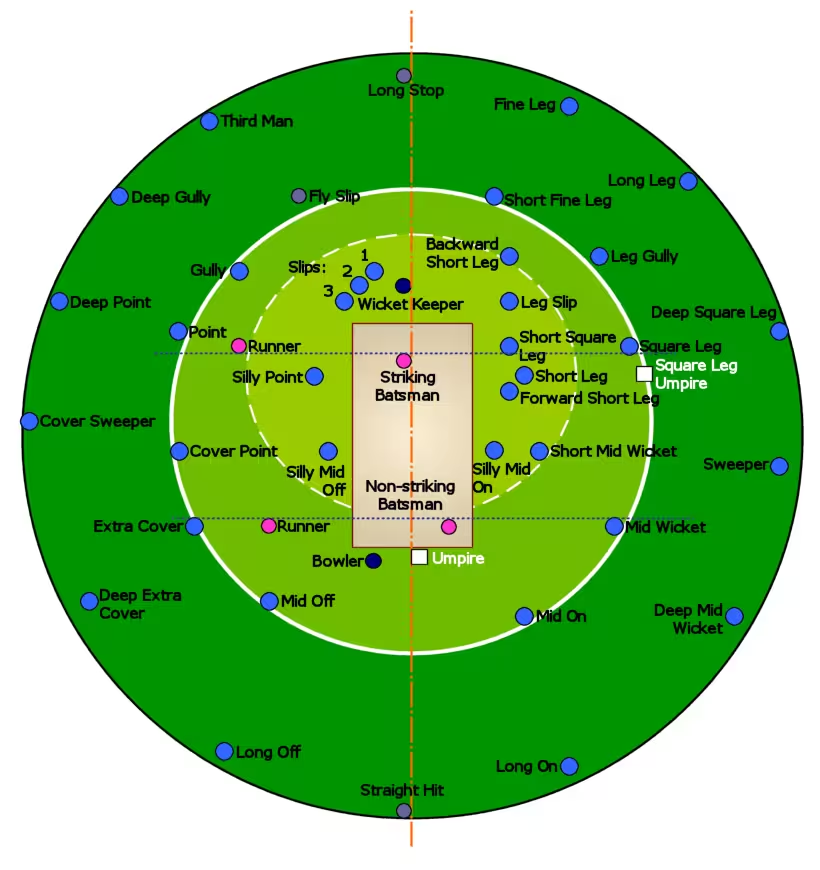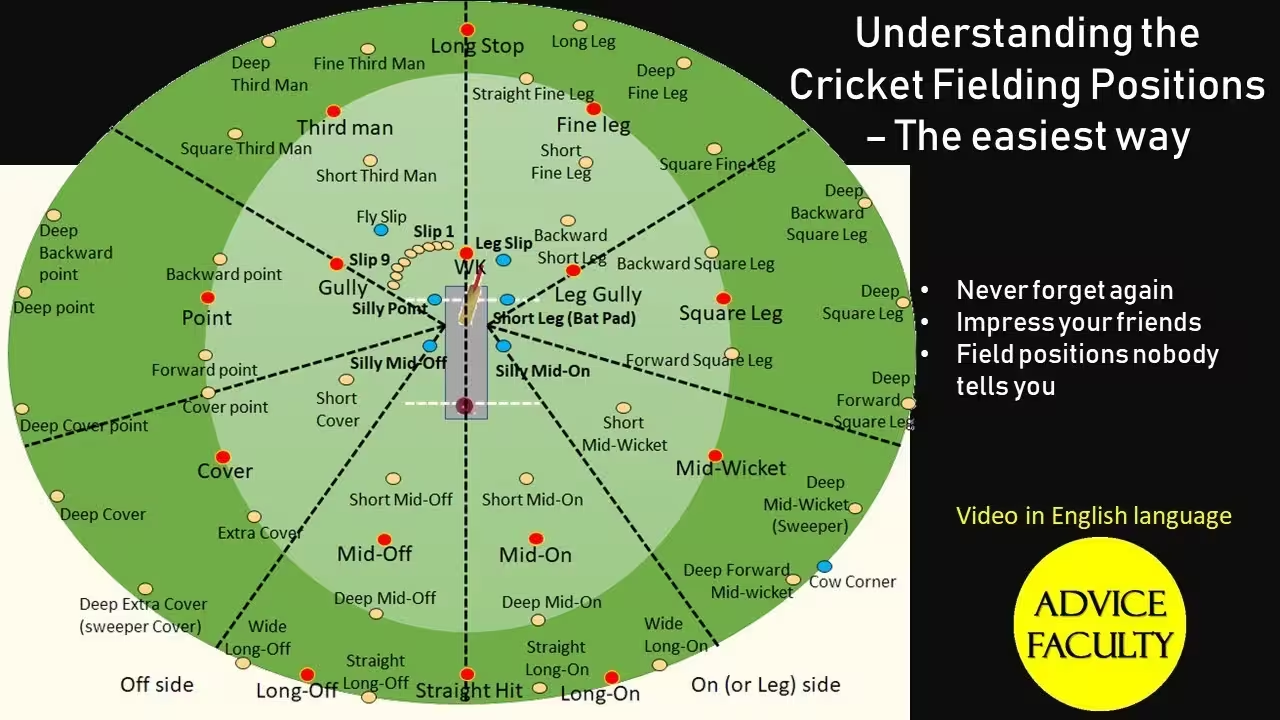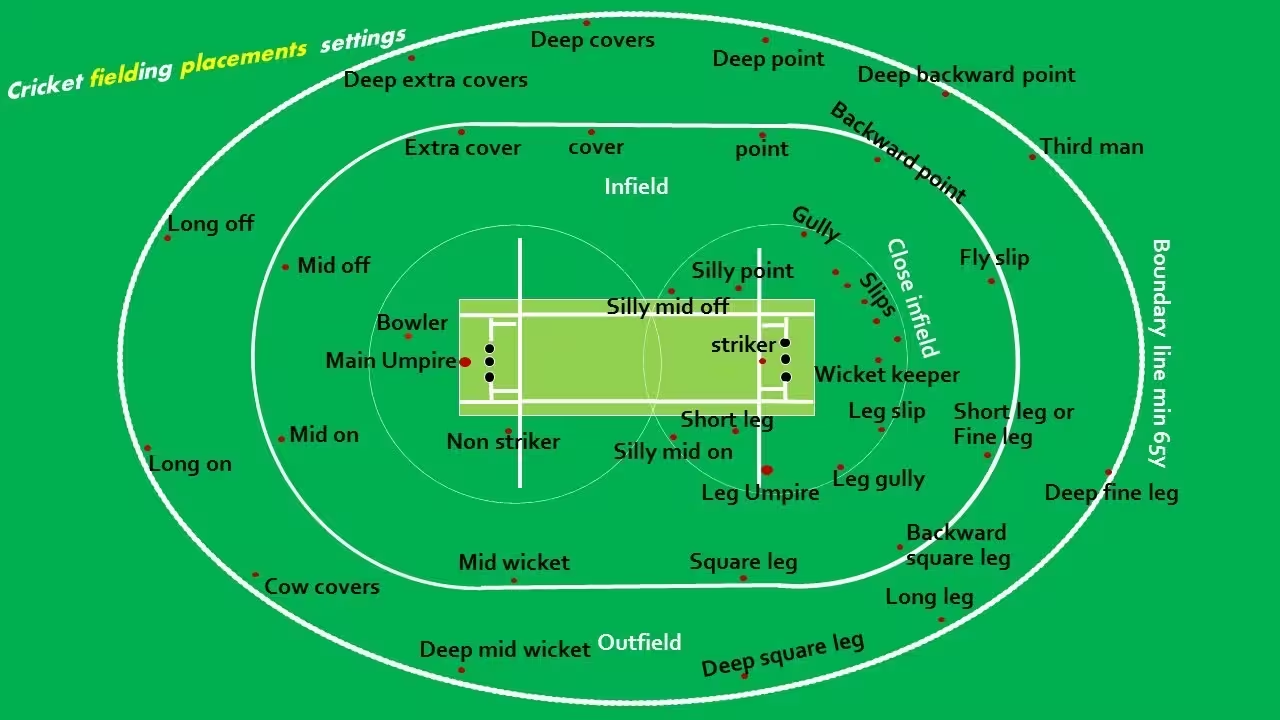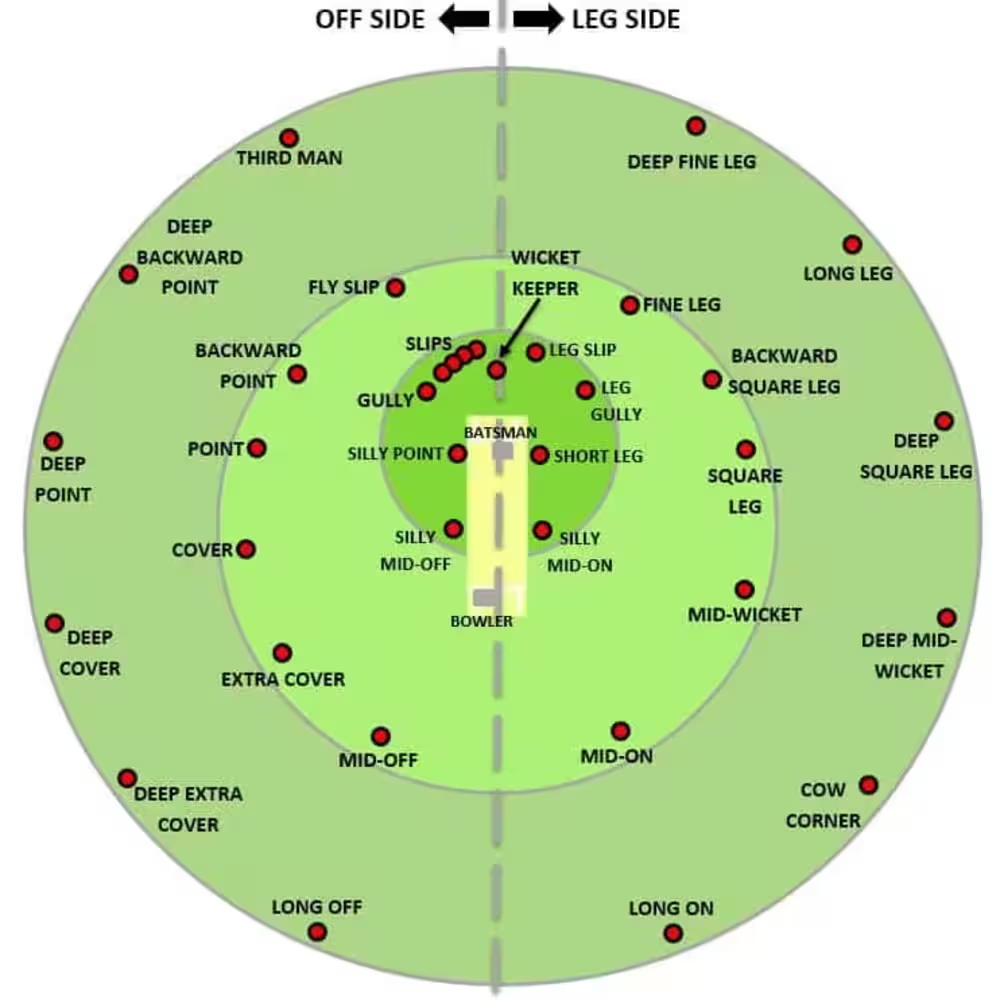What are Cricket Field Positions, and Why Should You Care?
Cricket is more than just batting and bowling. It’s a sport where strategy comes to life on the field, and every player has a role that can make or break the game. The way fielders are placed on the cricket field, called “cricket field positions,” can change the course of the match, whether it’s catching a quick shot or cutting off runs.
For fans, players, or anyone curious about the sport, understanding these positions isn’t just about knowing where players stand—it’s about knowing why they’re there, what they’re supposed to do, and how that influences the game. Whether you’re just getting into cricket or looking to level up your game knowledge, this guide will break down the key cricket field positions, the logic behind them, and even some game-changing insights.
What’s the Big Deal with Cricket Field Positions?
Think of it this way: Imagine a soccer match where every player’s position is set to trap, block, or shoot—only in cricket, the stakes are even higher. Unlike soccer, players don’t get to move up and down the field dynamically. Once the captain and bowler set the positions, each fielder sticks to that role.
The Cricket Field Layout: Mapping Out Positions
In cricket, the field is circular or oval and divided into different “zones” that guide field placement. Here’s how it breaks down:
-
Off-Side vs. Leg-Side (On-Side):
- Off-side refers to the area of the field that faces the batsman’s front when he or she is in a standard stance.
- Leg-side (or on-side) is the side facing the batsman’s back. Left-handed players simply flip these sides.
-
Infield and Outfield:
- The infield covers the space near the pitch, and it’s where key positions like slip and gully are located.
- The outfield is further out, where boundary catchers and other deep-Cricket field positions play.
The Most Common Cricket Field Positions You Should Know

Each position has a unique purpose and helps cover various zones on the field. Here’s a breakdown of some essential ones:
Key Positions on the Cricket Field
1. Slip:
- Located near the wicketkeeper.
- Ideal for catching edges off the bat.
- Usually a high-pressure position for catches or deflections.
2. Gully:
- Positioned a bit wider than slip.
- Captures balls that slip and wicketkeeper might miss.
- Strategic for fast-paced deliveries.
3. Point:
- Found on the off-side, square of the wicket.
- Focuses on cutting off powerful cut shots.
4. Mid-Off and Mid-On:
- Positioned close to the bowler, slightly to the left and right.
- Mid-on guards the leg-side, and mid-off guards the off-side.
- Great for stopping straight drives or close singles.
5. Square Leg:
- Located on the leg-side, square with the batsman.
- Key for fielding leg glances and sweep shots.
6. Fine Leg:
- Positioned closer to the boundary.
- Excellent for stopping finer leg-side shots.
7. Cover:
- Positioned on the off-side, between point and mid-off.
- Vital for stopping or catching cover drives.
8. Mid-Wicket:
- Found on the leg-side, usually closer to the infield.
- Known for stopping powerful flicks and mid-wicket drives.
How Fielding Positions Change with Bowling Types
Pace Bowlers: Generally, fast bowlers get slip fielders, gully, and point. The Cricket field positions are set to cut off powerful, fast-paced shots and capture edges off the bat.
Spin Bowlers: For spin bowlers, the positions adapt. You’ll often see close-in positions like short leg, silly point, or slip to catch miss-hits or edges.
Field Positions for Right-Handed vs. Left-Handed Batsmen
Field placement adapts based on the batsman’s dominant hand. For instance, right-handed batsmen might have their off-side heavily guarded, while left-handers may see more fielders shifted to the leg-side.
Different Field Setting Strategies: Attacking vs. Defensive
Cricket fielding strategies largely fall into two categories:
- Attacking Field Setups: Aim to take wickets, with close-in fielders like slips, silly point, and leg gully. Captains use these when they’re confident about forcing a mistake from the batsman.
- Defensive Field Setups: Focus on limiting runs rather than taking wickets. Fielders are spread wider and deeper, especially along the boundary.
Game Time: How to Spot Fielding Strategies in Action
Fielding positions aren’t just a background detail—they’re clues about what’s coming next.
- Watch for Slip Fielders: If you see slips in place, expect fast deliveries with an intent to catch edges.
- Look for Silly Point: This close-in fielder is often a giveaway that a spin bowler is about to test the batsman’s patience.
- Deep Fielders: When you see deep fielders along the boundary, it’s a sign the team is playing defensively, trying to save runs.
The Influence of Conditions on Field Placements
Weather and Pitch Conditions: A pitch that offers bounce might mean more slips for fast bowlers, while a slower pitch could see more close-in fielders for spinners.
Weather Impact: If it’s windy, bowlers might rely on swing, prompting an off-side field placement for catching.
Building Your Cricket Knowledge: Examples and Common Scenarios

Imagine this: It’s a tense match, and the bowler is setting up for a fast-paced delivery. You notice two slips, a gully, and a short cover. The captain isn’t leaving anything to chance—he’s setting up to catch the batsman off guard, hoping for an edge.
Or consider another scenario. A spinner is up, and you see silly point, short leg, and slip all crowded close to the batsman. It’s clear they’re banking on a tricky delivery and a defensive bat shot, aiming for a quick catch.
Fielding Terms and Cricket Lingo to Know
- Silly Point: The close-in position on the off-side, almost “silly” close to the batsman.
- Backward Square Leg: Positioned behind the batsman on the leg side for catching glanced shots.
- Third Man: Fielded wide outside slip, near the boundary to stop outside edges.
Frequently Asked Questions (FAQs)
1. Why are cricket field positions so crucial?
Cricket field positions determine how effectively the team can either stop runs or take wickets. It’s all about reading the batsman and predicting shot angles.
2. What’s the difference between slip and gully?
Slip is closer to the wicketkeeper, while gully is wider and slightly deeper, aiming to capture edged shots that go further out.
3. How does a captain choose Cricket field positions?
Captains set positions based on the bowler’s style, the batsman’s tendencies, and field/pitch conditions.
4. Do cricket field positions change often during a match?
Yes, Cricket field positions adjust based on game dynamics, score pressures, or when a new batsman comes to the crease.
5. What are attacking Cricket field positions?
Attacking positions include slips, silly point, and short leg—used to take wickets rather than just stopping runs.
Wrapping It Up
Cricket field positions aren’t random; they’re the heartbeat of any good cricketing strategy.
Knowing the field layout gives insight into the game that a casual fan might miss. Whether you’re watching or playing, understanding “cricket field positions” adds a whole new dimension to the game. So next time you’re tuning in or out there on the field, watch those positions—they’ll tell you what’s coming next.


